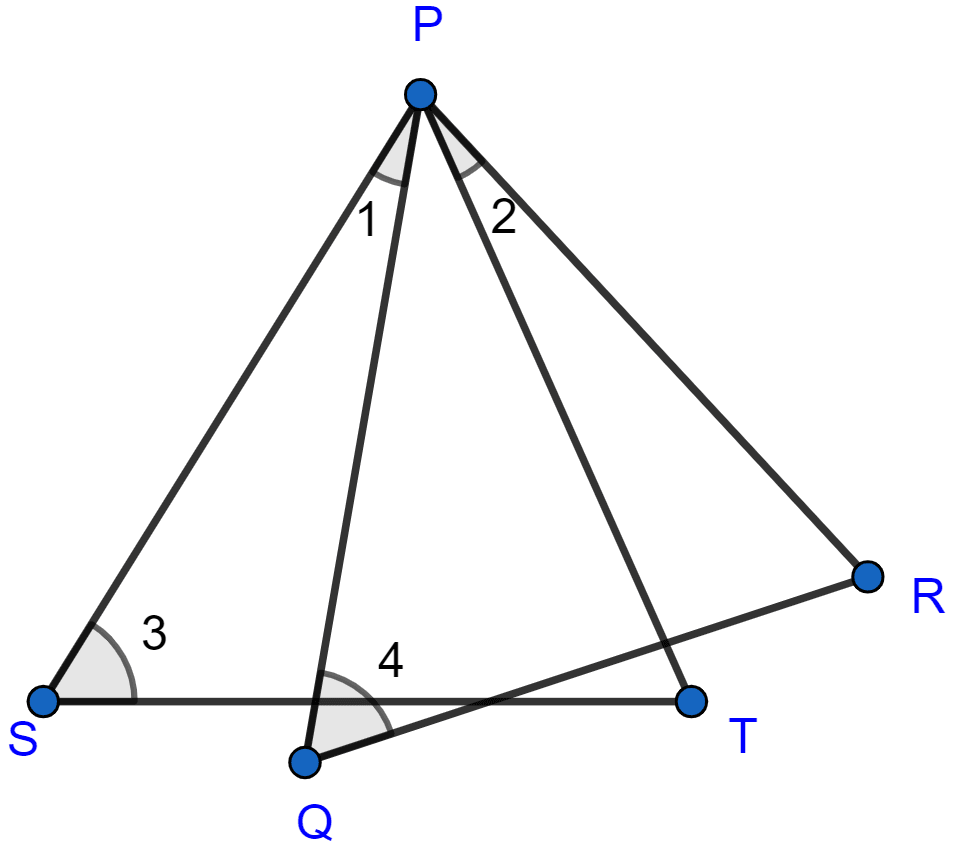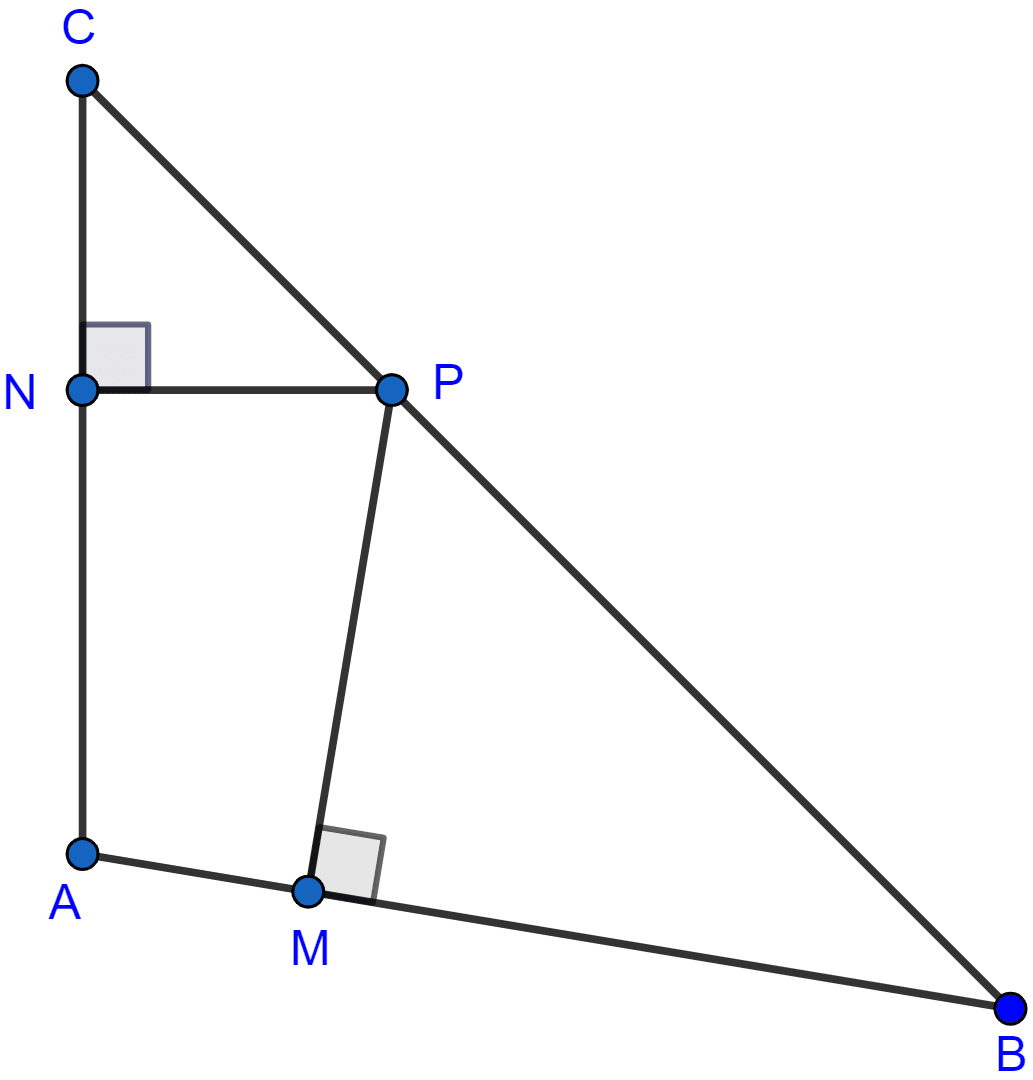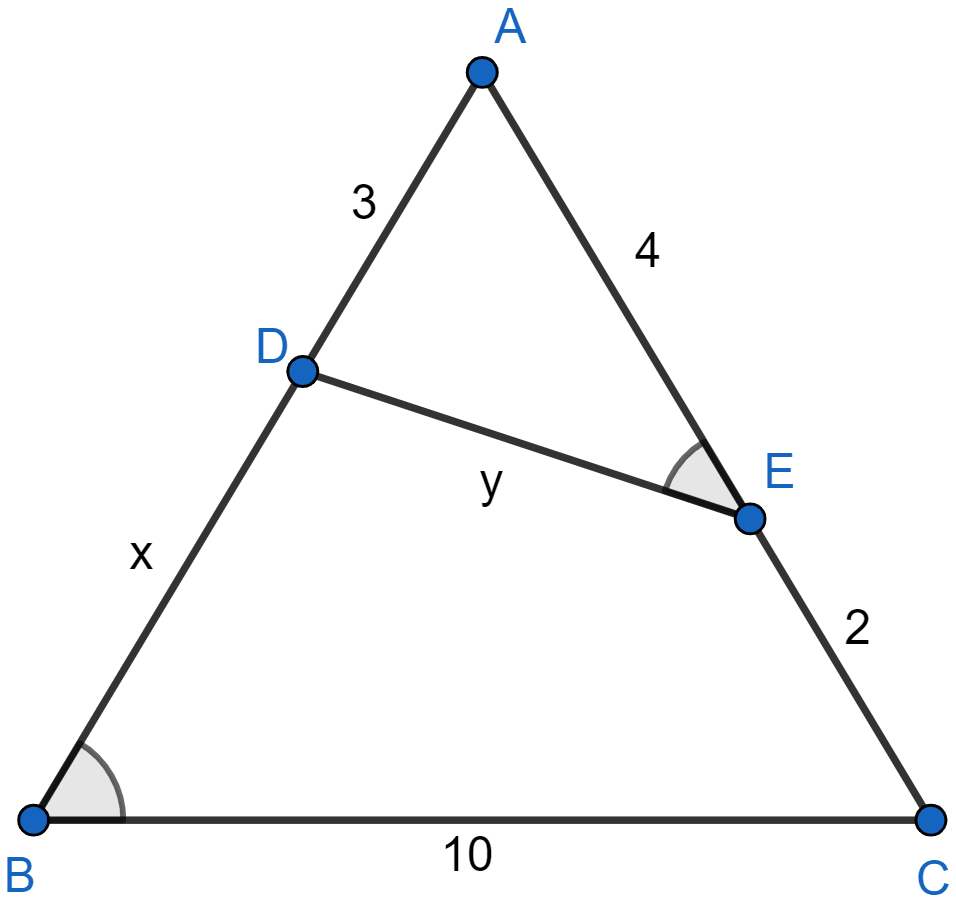Mathematics
In the adjoining figure, ∠1 = ∠2 and ∠3 = ∠4. Show that PT × QR = PR × ST.

Similarity
41 Likes
Answer
Given, ∠1 = ∠2
Adding ∠QPT to both the sides,
∠1 + ∠QPT = ∠2 + ∠QPT
∴ ∠SPT = ∠QPR
∠PST = ∠PQR (As ∠3 = ∠4)
Hence, by AA axiom △PQR ~ △PST.
Since, triangles are similar so ratio of their corresponding sides will be equal.
Hence, proved that PT × QR = PR × ST.
Answered By
24 Likes
Related Questions
The areas of two similar triangles are 81 cm2 and 49 cm2 respectively. If an altitude of the smaller triangle is 3.5 cm, then the corresponding altitude of the bigger triangle is
9 cm
7 cm
6 cm
4.5 cm
Given △ABC ~ △PQR, area of △ABC = 54 cm2 and area of △PQR = 24 cm2. If AD and PM are medians of △'s ABC and PQR respectively, and length of PM is 10 cm, then length of AD is
cm
cm
15 cm
22.5 cm
In the adjoining figure, AB = AC. If PM ⊥ AB and PN ⊥ AP, show that PM × PC = PN × PB.

In the figure (1) given below, ∠AED = ∠ABC. Find the values of x and y.
